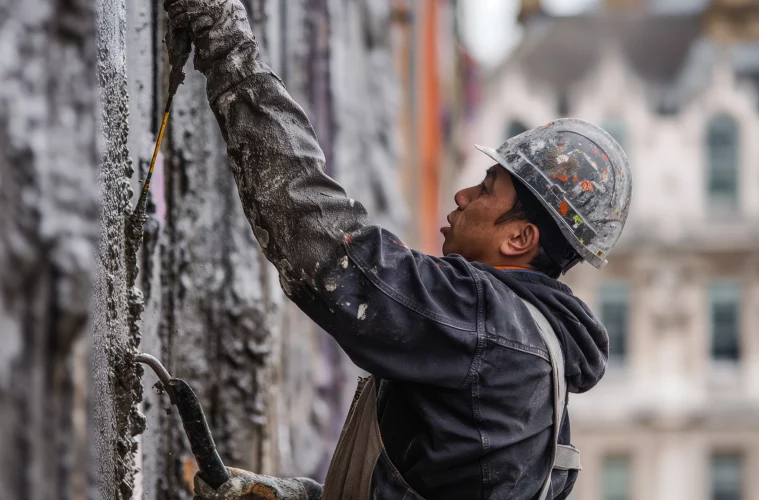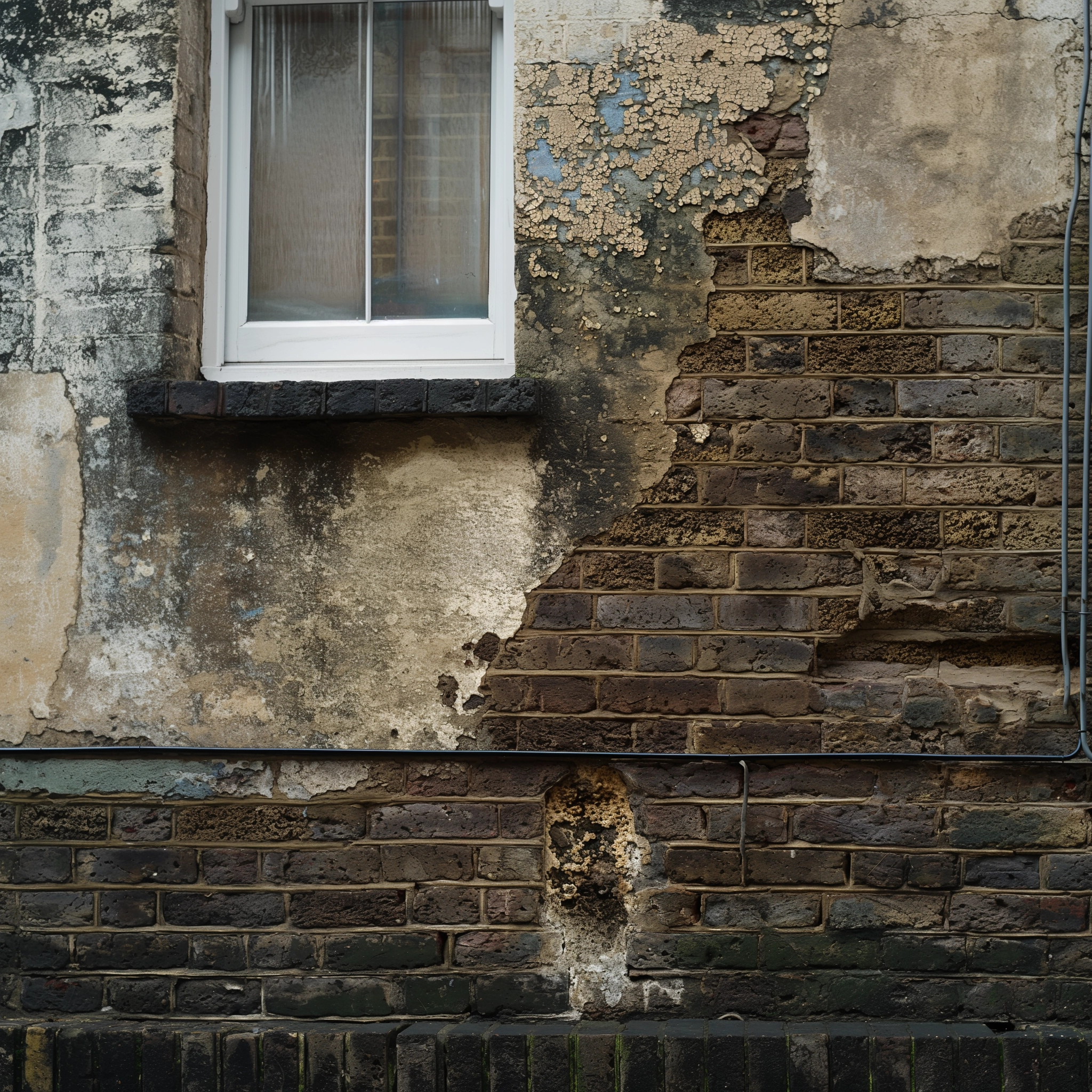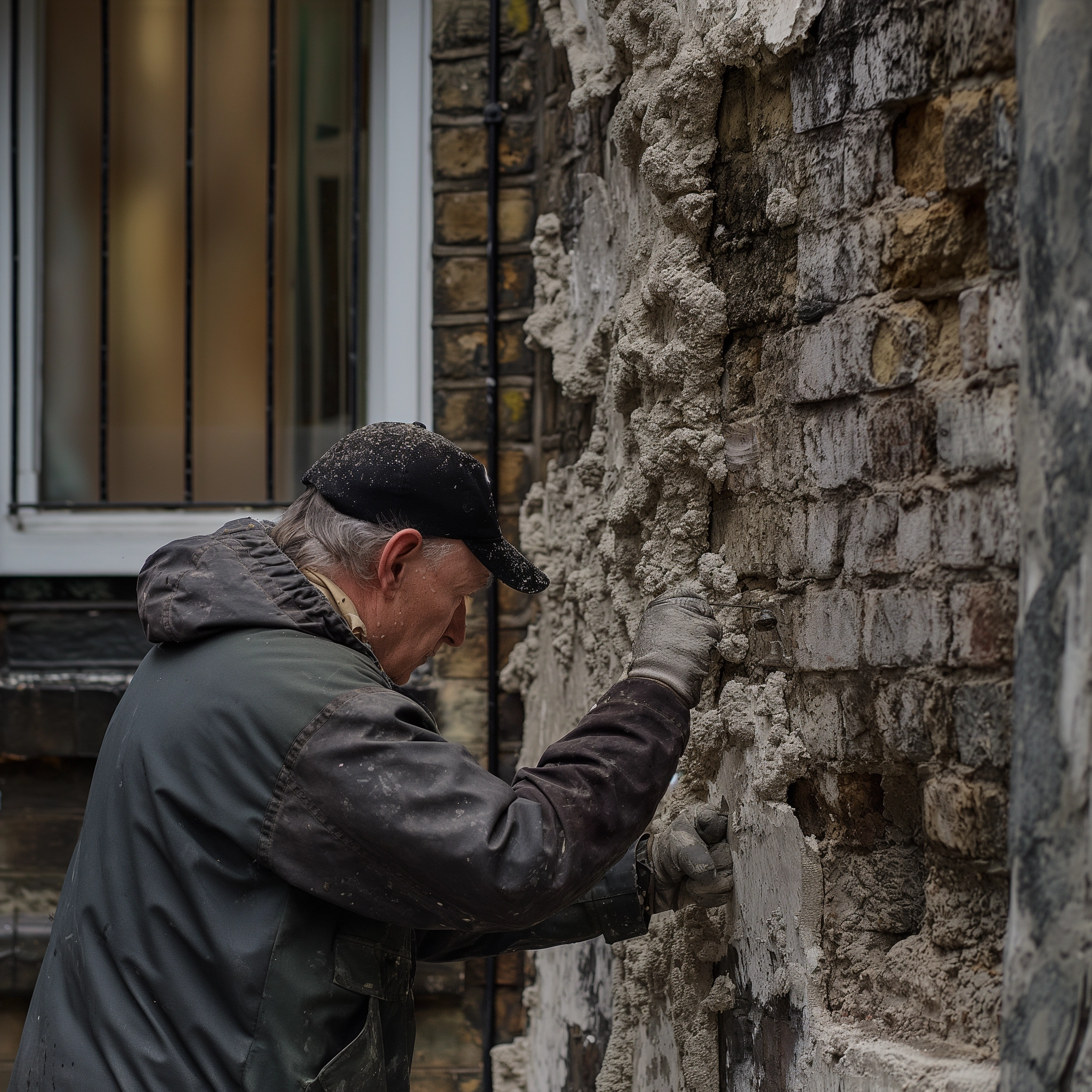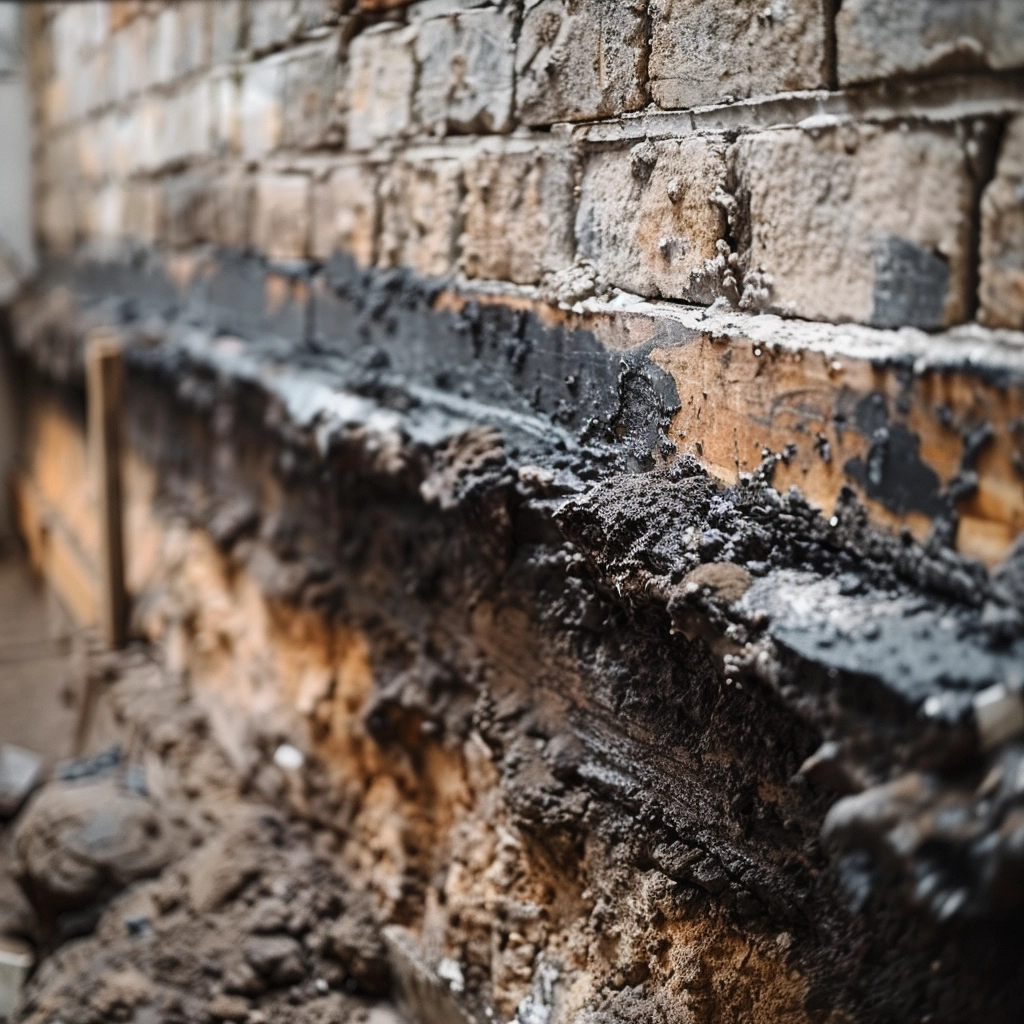In the heart of London, homeowners and property investors face an age-old challenge that can undermine the integrity of even the most majestic homes: damp. The battle against moisture within the walls of our living spaces is not just a matter of aesthetic concern but a crucial aspect of property maintenance that, if neglected, can lead to significant structural damage and health issues.
By understanding moisture control, identifying types of damp, recognising their causes, and implementing effective damp proofing methods, you can protect your property and ensure a healthy living environment.
Moisture Control in Buildings
The cornerstone of a dry and healthy home is effective moisture control. Moisture can infiltrate buildings through various means, leading to different types of damp. The primary objective is to prevent moisture from entering and accumulating within the structure. Moisture control involves a combination of proper ventilation, heating, and moisture barriers. Ensuring your home can breathe and expel excess moisture is vital in maintaining a dry environment. More information on the basics of moisture control and its importance can be found in Envirovent’s guide on damp problems.
Types of Damp: Rising, Penetrating, Condensation
Understanding the types of damp is crucial in identifying and addressing moisture problems effectively:
- Rising Damp: This occurs when water from the ground rises up through the walls by capillary action. It is more common in older buildings that may need a damp proof course (DPC) or where the DPC has failed. Detailed information on rising damp can be explored at Safeguard Europe.
- Penetrating Damp: Caused by water leaking through walls, roofs, or window frames, penetrating damp is often the result of structural issues or faulty waterproofing.
- Condensation: The most common form of damp, condensation occurs when moist air condenses on cold surfaces, leading to water buildup. It is often seen in poorly ventilated or heated rooms.
Causes of Damp
The main culprits behind damp include:
- Condensation: Due to inadequate ventilation or heating, leading to excess moisture indoors that condenses on cooler surfaces.
- Rainwater Seepage: Faulty roofing, guttering, or window frames can allow water to penetrate the building.
- Capillary Action: Water from the ground can rise through walls and floors by capillary action, a phenomenon seen in rising damp.
Damp Proofing Methods
Various damp proofing methods can be employed to combat damp, which are barriers designed to prevent rising damp and moisture penetration. A comprehensive overview of damp proofing methods can be found on Wikipedia.
To combat damp, various damp proofing methods can be employed:
- DPCs (Damp Proof Courses): These are barriers, typically installed at the base of walls, designed to prevent rising damp.
- DPMs (Damp Proof Membranes): Used to block moisture from floors and walls, DPMs are essential in preventing damp from penetrating surfaces.
Materials for Damp Proofing
Choosing the right materials is pivotal in effective damp proofing:
- Flexible Materials: Such as butyl rubber, offer excellent waterproofing qualities and adaptability to different structures.
- Rigid Materials: Materials like slate are used in DPCs to provide a solid barrier against moisture.
Treatment for Damp
Once damp has been identified, treatment options include:
- Damp-Proofing Rods/Cream: These are injected into the walls to create a barrier against moisture.
- Replastering: In cases where damp has damaged interior surfaces, replastering with damp-resistant plaster is necessary.
For a detailed guide on damp proofing, visit The Preservation Company.
Prevention Strategies
Preventive measures are the most effective way to combat damp:
- Modern DPC Installation: Ensuring that your home has a modern and effective DPC is crucial in preventing rising damp.
- Proper Ventilation: Good ventilation systems help reduce the risk of condensation by removing moist air from inside the home.
Awareness and Timely Action
Understanding the risks associated with damp and taking timely action to address any signs of moisture is crucial. Regular inspections and maintenance can prevent the escalation of damp-related problems.
Historical vs. Modern Construction Impacts on Damp Risk
The construction methods and materials used in historical versus modern buildings significantly impact the risk of damp. Often lacking modern damp proofing measures, older buildings are more susceptible to rising and penetrating damp. Conversely, modern construction techniques prioritise damp prevention but can still face challenges with condensation due to tightly sealed environments.
Professional Assessment
For maintaining a dry environment, seeking a professional assessment is advisable. Experts can offer tailored solutions, identify hidden problems, and ensure that the chosen damp proofing methods are effective for your specific property. More guidance on professional damp assessments can be found at the Property Care Association.
“When it comes to choosing the right professionals for damp proofing, the key is to look for specialists who not only have the technical qualifications and accreditations but also possess a deep understanding of the unique challenges presented by different types of properties. It’s essential to select a contractor who is transparent about their methods, offers a comprehensive warranty, and can demonstrate a proven track record of successfully resolving damp issues. Remember, effective damp proofing is not just about applying a solution; it’s about diagnosing the problem accurately and tailoring the treatment to ensure long-term protection for your home.” – Phil Donno – London Damp Treatments.
The Importance of Climate Considerations
London’s climate, characterised by its mild temperatures and relatively high humidity, poses unique challenges in moisture control within homes. The damp and rainy weather can exacerbate existing damp problems or contribute to new issues if homes are not adequately protected.
Understanding the local climate and its impact on buildings is crucial for effective damp management. Homeowners should consider seasonal changes and adapt their moisture control strategies accordingly, such as increasing ventilation during the colder, wetter months and ensuring proper heating to prevent condensation.
The UK Government’s statistics on housing with damp problems provide further insight into the prevalence of damp issues across different housing types and regions, highlighting the importance of climate considerations in damp management.
Innovations in Damp Proofing Technology
Advancements in technology have introduced new materials and methods in the fight against damp. These innovations offer more effective, less invasive solutions for damp proofing, such as electro-osmotic damp proofing systems that use electrical currents to repel water away from walls, and breathable waterproof membranes that allow moisture to escape from the structure while preventing water from entering.
Staying informed about these advancements can provide homeowners with more options for protecting their properties.
Health Implications of Damp Environments
The presence of damp in a home is not just a structural concern but also a significant health risk. Damp environments promote the growth of mold and mildew, which can lead to respiratory problems, allergies, and asthma.
The spores released by mould can be particularly harmful to children, the elderly, and those with pre-existing health conditions. Addressing damp issues promptly can prevent these health risks and ensure a safe living environment.
Legal and Insurance Implications
In London, as in many parts of the UK, there are legal and insurance implications related to damp in properties. Landlords, for example, have a legal obligation to ensure their properties are free from damp-related health hazards. Failure to address damp issues can lead to legal action from tenants.
Additionally, untreated damp can affect property insurance claims, as many insurers may not cover damage caused by unresolved damp issues. Understanding these implications can motivate property owners to take proactive steps in damp proofing their properties.
Energy Efficiency and Damp Proofing
Effective damp proofing and moisture control can also enhance a home’s energy efficiency. Damp walls and floors can lead to increased heat loss, requiring more energy to heat the home.
By addressing damp issues and implementing effective insulation and ventilation solutions, homeowners can reduce their energy consumption and lower their heating bills. This synergy between damp proofing and energy efficiency highlights the broader benefits of maintaining a dry home.
Community and Government Resources
In London, there are various community and government resources available to homeowners dealing with damp. These resources include advice centres, grants for damp proofing works, and initiatives aimed at improving housing conditions.
Leveraging these resources can provide financial and technical assistance, making it easier for homeowners to address damp issues effectively.
Cultural and Historical Preservation
For owners of historical properties in London, damp proofing carries the additional challenge of preserving the cultural and architectural integrity of their buildings. Traditional damp proofing methods may not always be suitable for historical buildings, requiring specialised approaches that balance moisture control with preservation needs.
Consulting with experts in historical preservation can ensure that damp proofing efforts are both effective and respectful of the building’s heritage.
The Role of Landscaping in Moisture Control
The external environment of a property can significantly impact its internal moisture levels. Proper landscaping and garden design can help manage water runoff and prevent water from pooling near the foundation, reducing the risk of penetrating damp.
Simple measures like installing gutters, downspouts, and proper grading can direct water away from the building, providing an additional layer of protection against damp.
The Psychological Impact of Living in a Damp Home
Living in a damp home can have psychological effects, including stress and anxiety, due to concerns about health risks and the cost of repairs. The appearance of mould and the persistent musty smell can also affect the comfort and well-being of occupants.
Addressing damp issues not only improves the physical health of the inhabitants but also their mental well-being, creating a more pleasant and stress-free living environment.
Final Thoughts
Maintaining a dry home in London’s damp-prone climate is a multifaceted challenge that requires a comprehensive approach. From understanding the types of damp and their causes to implementing effective damp proofing methods and leveraging technological advancements, homeowners have a range of strategies at their disposal.
By prioritising moisture control, health and legal implications, energy efficiency, and the preservation of historical properties, property owners can protect their investments and ensure a healthy living environment.
Awareness, timely action, and ongoing education are key to navigating the complexities of damp proofing successfully. With the right knowledge and resources, homeowners can not only beat damp but also enhance the value and livability of their properties.




